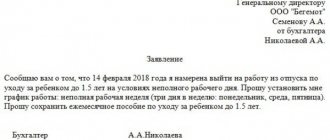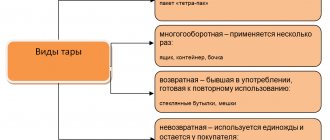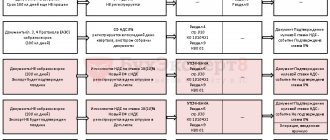Initially, the list of discounted publications was approved by Decree of the Government of the Russian Federation dated January 23, 2003 No. 41, which was amended more than five times.
The preferential VAT rate of 10% can only be used by publishers of periodicals and books related to education, science and culture.
Reduced VAT does not apply to publications of an advertising and erotic nature.
Previously on the topic:
For what reasons will the declaration not be accepted in 2021, but the “camera chamber” will be conducted more thoroughly?
Publications of an advertising nature include publications in which advertising or promotional information constitutes more than 45 percent of the volume of one issue of the publication.
The right to a reduced VAT of 10% is confirmed by a Certificate issued by the Federal Agency for Press and Mass Communications.
Based on the Certificate, both the publishers themselves and all distributors participating in the sales chain have the right to apply 10% VAT on the sale of publications.
Publishers that apply 10% VAT must independently apply for a certificate from the Federal Agency for Press and Mass Communications. Samples of publications must be provided along with the request for a certificate.
10% or 20%? We determine the VAT rate for goods
In accordance with bill No. 1038289-7, approved by the Federation Council of the Russian Federation on November 18, 2021, the period of exemption from VAT when importing breeding products into the territory of the Russian Federation is extended. In this case, the purpose of import can be both further sale and own consumption. This rule will be in effect until the end of 2022 .
Against the backdrop of the current epidemiological situation, employers were required to provide sanitary services to employees and clients: the availability of antiseptics and disinfectants in crowded areas, the provision of personal protective equipment and other similar products.
Such provision is provided for by the Labor Code of the Russian Federation, recommendations of the Ministry of Health of the Russian Federation and Rospotrebnadzor and is not considered as a gratuitous transfer, therefore, it is not necessary to tax it with value added tax .
If a taxpayer engaged in export activities cannot justify the application of a zero VAT rate, then in accordance with Article 7 of Art. 164 of the Tax Code of the Russian Federation, he has the right to refuse to use it. To do this, before the 1st day of the tax period, you must send a corresponding application to the tax office. The period for application of the tax rates provided for in such a statement must be at least 12 months .
On November 11 of this year, the State Duma of the Russian Federation approved bill No. 1025470-7, which gives the right to companies under tax monitoring to use the declarative procedure for compensation without a bank guarantee, guarantee and a limit on the amount of previously transferred tax amounts .
This measure will allow more payers to switch to tax monitoring.
VAT rates in 2021 - table
VAT rates in Russia by year (table)
Confirmation of zero VAT rate in 2021
VAT 2019
VAT rate – 10 percent: list of goods 2019
Legislators do not provide for changes in the VAT rate in 2021. The tax is still calculated at rates equal to 20%, 10% and 0%. For some transactions, calculations are made at a special rate - 16.67% or at settlement rates - 10/110 and 20/120, used to isolate the amount of tax, incl. tax agents. All specified rates are given in Chapter 21 of the Tax Code of the Russian Federation and are applied in transactions subject to VAT. Since the beginning of 2021, changes in the taxation of certain transactions have been legislatively approved. We will tell you about VAT rates from 01/01/2021.
The tax is out of print
Rospechat expects an increase in reading activity among “the younger generation, whose representatives, on the one hand, read less than older representatives (unless, of course, we consider reading as part of the educational process), and on the other hand, are to a greater extent consumers of electronic content,” the department’s press service told Rossiyskaya Gazeta. As a result, the market volume should also increase.
The pandemic has doubled the number of people reading in Russia
Reading activity has already increased amid the pandemic: while last year 38.7% said they read at least something, this year the share has increased to 67.9%, according to data from Ipsos and Rosindex (people older than 16 years in cities with a population of more than 100 thousand people). On mobile platforms, sales of e-books jumped by 68-90%, subscriptions are gaining popularity, while people who rarely read are more willing to listen to audiobooks.
In 2015-2019, a resident of Russia read on average three paper books a year and only every seventh read at least one e-book. In the USA, this figure is 12 paper books and 1.3 e-books per person, as indicated in the explanatory note of the Ministry of Telecom and Mass Communications to the draft resolution of the Russian government. Reducing or eliminating VAT increases the consumption of literature in general and textbooks, since the market is extremely price sensitive. Thus, in Sweden in 2002, reducing the VAT rate from 25% to 6% increased sales by 20% in a year and a half, while Poland, having increased the rate from zero to 5%, saw a drop in sales by 5%.
However, reading is a relative concept. An e-book is more convenient than a paper one, but due to its format it competes with video, music and social networks and does not always win. The capacity of the electronic and audiobook market in Russia last year amounted to 6.5 billion rubles, or 10% of the entire market (excluding educational literature), growth was at 35%. This year, the Liters platform expects less growth - 31%. Apparently, a certain percentage of people have been consumed by reading news related to quarantine and coronavirus.
In half of the world's countries, the VAT rate on printed and e-books is the same, about a third of countries have zeroed out the rate on electronic versions, and the same proportion have zeroed out VAT on both paper and e-books, according to a 2018 report by the International Publishers Association (IPA). Almost all of Latin America lives with zero rates. In 2018, the European Council also allowed the use of a reduced VAT rate on electronic books, since in some countries the number of electronic versions sold reached or exceeded the number of paper counterparts. Audiobooks in most EU countries are subject to VAT at the same rate as printed books - probably due to production and copyright laws.
To support the knowledge economy, encourage reading and promote lifelong learning, the IPA recommends a zero VAT rate for all books, regardless of their format or delivery method. Among the arguments in favor are a direct impact on the price of production and strengthening the position of national book publishing, as a result - the preservation of jobs and the viability of small and medium-sized companies. Of course, the Russian book industry has been wanting the same thing for quite some time, “and Rospechat as a whole treats this idea with understanding,” the agency’s press service told RG.
VAT was doubled. What sweets should become more expensive in Belarus?
VAT / 17:55 June 18, 2021 Which goods will become more expensive due to an increase in the VAT rate
Answering the question about the VAT rate for the sale of hot dogs, the Ministry of Finance explained the following.
When selling food products included in the government list, a VAT rate of 10% is applied. If products are not included in the list, a 20% rate applies.
The assignment of a product code according to OKPD2 is confirmed by available documentation, including declarations (certificates) of conformity.
From 07/01/2020, the import and sale of some milk-containing products with milk fat substitute will be taxed at a rate of 10%. Thus, the list of food products on the sale of which a tax must be paid at a rate of 10% includes the following milk-containing products with a milk fat substitute:
- drinks, cocktails and jelly;
- jellies, sauces, creams, puddings, mousses, pastes and soufflés;
- condensed canned food.
In addition, sales of milk-containing ice cream should also be taxed at a reduced rate. These changes are provided for by Government Decree No. 250 dated 03/09/2020.
In 2021, changes to Resolution No. 908, containing a list of products and goods for children subject to VAT of 10 percent, were introduced by resolutions of the Government of the Russian Federation:
- dated 01/30/2019 No. 58 (effective from 02/09/2019) - they added fish fillets and other fish meat (including minced meat) in fresh and chilled form to the list of products;
- dated 12/06/2018 No. 1487 (effective from 04/01/2019) - the list of amendments here is quite wide.
What exactly does the update in the list of goods with 10 percent VAT apply to? What specific products and children's products does it apply to? The full list of changes is as follows:
- in terms of food products:
- for live livestock and poultry, an indication has been added that the benefits do not include their breeding species;
- for fats and oils of animal origin, as well as for palm, coconut, palm kernel babassu and other vegetable oils, the marking on their intended use for food purposes is excluded;
- for soups and broths prepared with meat, it is clarified that they do not include not only vegetable ones, but also others that do not contain meat;
- ornamental rodents and reptiles have been added to the number of animals excluded from the list of consumers of boiled feed;
- it is clarified that other types of edible ice are also excluded from the list of benefits;
- the list includes hatching eggs, with the exception of breeding eggs;
- the composition of products for animal feeding has been detailed, and ornamental rodents and reptiles have been added to the list of those excluded from the list of consumers;
- The codes for onions and bulbous vegetables, as well as for other vegetables, have been clarified;
- the list of preferential knitwear and clothing products has been significantly expanded by adding the definition “similar” to the text of the description;
- hosiery was tied to the height of the child;
- mittens were added to gloves, mittens and mittens;
- by adding the preposition “to” the size of blankets, bed linen, beds and mattresses was specified;
- shoes with a rubber upper appeared in the list;
- cradles and playpen beds have been added to the number of beds;
- in relation to strollers, a clarification arose about the limitation of their technical equipment to the factory equipment;
- the list of toys for children to ride has been significantly expanded by including ATVs and other similar products in the list;
- the codes for human dolls and their accessories have been clarified;
- other materials for modeling and the accompanying accessories necessary for this process were added to the plasticine;
- Codes for diapers are detailed.
Thus, due to the changes in 2021, the list of goods with a VAT rate of 10 percent has expanded.
The 10% VAT rate is considered preferential and applies to goods specified in the Tax Code of the Russian Federation, but with product type codes mentioned in special decrees of the Government of the Russian Federation. In paragraph 2 of Art. 164 of the Tax Code of the Russian Federation, as well as one of the indicated resolutions (No. 908), changes were made in 2019-2020 that expanded the list of goods sold at a reduced rate.
Sources:
- Tax Code of the Russian Federation
- Government Decree No. 688 dated September 15, 2008
- Government Decree No. 908 dated December 31, 2004
- Government Decree No. 41 dated January 23, 2003
The amounts of established tax tariffs when calculating value added tax are prescribed in Article 164 of the Tax Code of the Russian Federation:
- 0% - export, international transportation (clause 1 of Article 164 of the Tax Code of the Russian Federation);
- 10% - a list of goods with a preferential VAT rate, recognized by the Government of the Russian Federation as socially significant;
- 20% - all other operations recognized as sales;
- 20/120 and 10/110 - calculated, used when the tax base includes tax (receipt of an advance, withholding by a tax agent);
- 16/167 – provision of services by foreign companies in electronic form, sale of an enterprise as a property complex.
VAT rate on sales of book products
Theoretically, the right to a preferential rate of 10% does not depend on the availability of a certificate, which is provided for in List No. 41. The certificate does not give its addressee the right to a preferential VAT rate, but only confirms the type and nature of the printed publication .
But in practice, applying a 10% rate without this certificate will lead to a dispute with the tax office. So, when asked what rate is taxed on the sale of book products purchased from other publishing houses, the inspectors answered that “to confirm the legality of applying the 10% VAT rate, it is necessary to submit a document that confirms that the type of printed product produced actually corresponds to the one indicated in the List. Such a document is a certificate issued by the Federal Agency for Press and Mass Communications” (letter of the Federal Tax Service of the Russian Federation for Moscow dated January 30, 2009 No. 19-11/007398).
Moscow tax authorities have repeatedly said that in the absence of a certificate, a tax rate of 18% should be applied (Letters of the Federal Tax Service of the Russian Federation for Moscow dated April 29, 2009 No. 16-15/042432 and dated October 20, 2004 No. 24-11/68947).
The Russian Ministry of Finance indicated that the VAT rate of 10 percent “is applied provided that Rospechat has issued the appropriate certificate” (Letter of the Ministry of Finance of the Russian Federation dated November 22, 2011 No. 03-07-14/113).
The outcome of a tax dispute is difficult to predict. The position of the courts is ambiguous. The FAS Moscow District did not support the inspectors. The judges indicated that “the absence in the case materials of a certificate issued by the Federal Agency for Press and Mass Communications cannot be a basis for changing the VAT rate established by tax legislation at its discretion” (Resolution dated December 29, 2008 No. KA-A40/12491-08 on case No. A40-3016/08-126-13). And that “a certificate from the Federal Agency for Press and Mass Communications is not a document giving its addressee the right to apply a preferential VAT rate, but only a document confirming the type and nature of the publication” (Resolution of the Federal Antimonopoly Service of the Moscow District dated September 26, 2007, October 2, 2007 on the case No. KA-A40/10055-07).
However, the FAS of the East Siberian District in its Resolution dated June 30, 2006 in case No. A19-28405/04-33-F02-3027/06-S1 concluded that the application of the 10 percent rate was unjustified, since the taxpayer “did not submit the above-mentioned certificate.” This position was also supported by the Federal Antimonopoly Service of the North-Western District in Resolution No. A56-27146/2006 dated 10/09/2007.
The Federal Antimonopoly Service of the West Siberian District in Resolution No. F04-8155/2006 dated December 6, 2006 (29040-A45-25 in case No. A45-6495/06-40/221) indicated “that in order to confirm the legality of applying the VAT rate of 10%, it is necessary to have a document , which would confirm that the type of printed product produced actually corresponds to that specified in the list." But the taxpayer "did not fully fulfill his obligation to submit all documents giving the right to apply a tax rate of 10%."
Get expert advice
according to your situation and get expert advice.
Ask a Question
Ask a Question
Reduction of VAT on fruits and berries from 20% to 10%
| Tax rate | Transactions taxed at the specified tax rate | |
| 20%(basic) 20/120(calculated) | In all cases except those described below | |
| 10%(basic) 10/110(calculated) | Sales of goods (works, services) listed in paragraphs. pp. 1 - 7 p. 2 tbsp. 164 Tax Code of the Russian Federation [td]Tax rate | Transactions taxed at the specified tax rate |
| 18%(basic) 18/118(calculated) | In all cases except those described below | |
| 10%(basic) 10/110(calculated) | Sales of goods (works, services) listed in paragraphs. pp. 1 - 7 p. 2 tbsp. 164 Tax Code of the Russian Federation The Russian authorities are in favor of comprehensive support and development of domestic business. A VAT rate of 10% serves these purposes. The reduced rate applies to many vital products. Most products intended for children are subject to 10% VAT:
|
The VAT rate increased to 20 percent
Cattle and small cattle and other types of breeding animals, including horses and pigs, are taxed at 10%. The group also includes breeding eggs and embryos taken from breeding stock.
Also, a rate of 10% is used in cases of transfer of livestock and poultry under leasing agreements with a subsequent right of purchase (Article 26.3 of the Law of August 5, 2000 No. 118-FZ).
Every seller and buyer knows the simplest things about VAT. If a company sells a product or service at least a small part more than its cost, then it will definitely have to pay VAT. The simplest explanation in this case: the tax will be a certain percentage rate between the cost of the product and its selling price.
The Tax Code of the Russian Federation determines the following tax rates for Russian businessmen: 20%, 10% and 0%. There are also bets based on 10/110 and 20/110, as well as a bet of 16.67. The latter will be applied only in the case of the sale of the enterprise in its entirety - as a property complex - or when providing electronic services for foreign organizations.
There are several rates for value added tax in Russia. In 2021, their value is 0%, 10% and 20% (clauses 1-3 of Article 164 of the Tax Code of the Russian Federation). The difference between them is due to:
- linking to certain types of activities, most of which involve crossing Russian borders - for a 0% rate;
- providing preferential tax conditions for a number of goods and some services - at a rate of 10%.
A rate of 20% should be used in all other situations, if they do not require the use of a calculated rate (derivative of 10% or 20%), at which the tax is calculated from the amount that includes its value (clause 4 of Article 164 of the Tax Code of the Russian Federation).
In what cases does 10 percent VAT apply? As of 01/01/2021, VAT 10% applies (clause 2 of article 164):
- to a number of food products, including: live cattle and poultry;
- meat obtained from them and products made using this meat (except for delicacies);
- products arising during the life of livestock and poultry (milk, eggs) and products created on their basis;
- vegetable oil, with the exception of palm oil, which is subject to VAT at a rate of 20% from 10/01/2021 (law dated 08/02/2021 No. 268-FZ);
- margarine and special purpose fats;
- sugar and salt;
- bread, cereals, flour, pasta;
- live fish and seafood (except delicacies) and products made from them;
- products made for children and diabetics;
- vegetables, including potatoes;
- from 10/01/2021 - fruits and berries, including grapes (law dated 08/02/2021 No. 268-FZ);
There are some nuances in applying the 10% rate to fruits and berries. Read about them in the Review from ConsultantPlus. Trial access to the system can be obtained for free.
- goods intended for children: knitwear;
- garments for sewing production (except for products made of genuine leather and natural fur, with the exception of sheepskin and rabbit);
- shoes (except sports shoes);
- beds, mattresses, strollers, diapers;
- toys and plasticine;
- stationery intended for training and development;
By type (in relation to the codes of these types), the goods listed in this list are specified in the decrees of the Government of the Russian Federation:
- dated December 31, 2004 No. 908 - in relation to food products and goods for children;
- dated September 15, 2008 No. 688 - on medical goods;
- dated January 23, 2003 No. 41 - in relation to printed materials.
Therefore, to find an answer to the question: “What goods are subject to VAT of 10 percent in 2021?” — you should refer not only to the current edition of the Tax Code of the Russian Federation, but also to the current editions of these resolutions, keeping in mind that the text of the first of the documents (Resolution No. 908) was updated twice during the year.
Basically, 10% VAT applies to food products included in the consumer basket. Let's take a closer look at which goods are subject to 10 percent VAT in accordance with tax legislation:
- Livestock and poultry supplied live for sale with subsequent slaughter and processing or for other needs;
- Meat products and meat with the exception of deli products, including various smoked meats, veal, cuts, deli-type preserves;
- Dairy products and pasteurized, sterilized milk - this category includes yoghurts, ice cream, fruit ice, etc.;
- Eggs and products based on them;
- Sunflower and other types of vegetable oil;
- Margarine is edible and food fats for use in confectionery production, fats for the production of chocolate, baked mixtures;
- Salt and sugar;
- Cereals in purified or processed form, grain waste;
- Combined feed based on grains, mixtures for animal feed;
- Flour, cereals;
- Pasta;
- Live fish except for rare and delicacy types. Among them are sturgeon, Far Eastern and Baltic salmon, and a number of other fish;
- Seafood, herring, chilled and frozen fish, except for rare species and caviar products, crabs and a number of other delicious seafood;
- All types of vegetables;
- Locally produced fruits.
Please note that if a manufacturing company operates for export, with a final delivery point outside the Russian Federation, then a zero rate is applied to it, since VAT is an internal tax. However, the exporter must still provide zero reporting, as well as the necessary permits from customs and other authorities to the tax office at the company's registered address.
Another product group that falls under the ten percent rate is products designed for children. In particular, it includes:
- Children's beds made of wood and woodworking products;
- Knitwear, clothing, sheepskin, rabbit fur, underwear;
- Summer, winter, special footwear;
- Bed dress;
- Diapers and a range of hygiene products;
- Sewing products;
- School supplies - notebooks, pens, pencils, paints, pencil cases, abacus, rulers, etc.
The reduced rate is necessary to ensure financially free access to goods that are socially significant. In the case of children's supplies, this rule is aimed at creating more favorable purchasing conditions for parents and special child care institutions.
Many food products are subject to a 10% rate:
- poultry products, including eggs;
- meat products, excluding various delicacies in the form of tongue, veal, and so on;
- vegetable oils;
- sugar;
- milk and all dairy products, excluding additives such as fruit or berry ice;
- flour, bakery and pasta products;
- vegetables;
- products for baby and dietary food;
- products intended for nutrition of diabetics;
- fish and seafood, except for delicacies in the form of valuable species of fish, caviar, and so on.
VAT may be canceled on book products
The government is preparing measures to support bookstores; tax breaks may be introduced for them, including zero VAT and the ability to write off illiquid products in large volumes.
The Ministry of Telecom and Mass Communications has developed a draft order of the Russian government with measures to support trade in books and print media in 2017-2018, Kommersant reports. It, in particular, proposes introducing preferential taxation: zeroing out VAT rates for book publishers and distributors, and also allowing larger volumes than now to write off illiquid printed products that were not sold during the year. Distributors are also provided with preferential rates for sending books and periodicals by mail and reduced rates of insurance contributions to the Pension Fund and social and compulsory health insurance funds. In addition, the Ministry of Telecom and Mass Communications proposes to classify book advertising as social advertising.
The project also assumes that the Ministry of Culture will attract private investment in the construction of cultural centers. Multifunctional cultural centers are now created exclusively at the expense of the state, and their funding comes from the federal, regional, and sometimes from municipal budgets, a representative of the Ministry of Culture clarified. The possibility of attracting private investment in their construction has not yet been discussed.
In addition to the Ministry of Telecom and Mass Communications, the Ministry of Economy, the Ministry of Finance, Rospechat, the Federal Antimonopoly Service, the Ministry of Culture, and the Ministry of Education and Science are responsible for the implementation of the project. The Ministry of Economy confirmed the work on the project: the department sent its comments to the Ministry of Telecom and Mass Communications. Other ministries did not respond to requests. A Kommersant source in the government notes that the document is still being discussed at the ministerial level. Last week, market participants received the draft for discussion, the Association of Printed Products Distributors clarifies.
The Eksmo-AST publishing group, as a member of the Russian Book Union, prepared expert recommendations when developing measures to support the book trade, notes group president Oleg Novikov. He especially insists on the importance of supporting small and medium-sized businesses, as well as the introduction of preferential rent for book trade in cultural institutions and subsidies for bookselling companies. The head of Eksmo-AST calls the proposal for zero VAT an expected step: this is a “widespread practice” in countries with the most developed reading infrastructure. The measures being discussed can ensure double growth of the market by 2030, Mr. Novikov is confident. According to Rospechat, at the end of 2015, book sales amounted to 73.6 billion rubles. (including budget purchases), of which bookstores earned 30 billion rubles, kiosk chains - 1.1 billion.
Co-founder of the Falanster bookstore Boris Kupriyanov notes the importance of the rule on writing off illiquid products: now they are on the balance sheet of companies and are subject to taxes, their write-off will reduce tax deductions for the book industry by 30%, despite the fact that they are now among the highest in the world in Russia . Equating booksellers with social entrepreneurship and subsidizing the book business will especially help bookstores in small towns, Mr. Kupriyanov believes: this will make it more difficult for them, in particular, to terminate a lease, and entrepreneurs will have a new incentive to enter the industry. Finally, after the introduction of preferential rates for mail delivery, stores, including Phalanster, may consider introducing such a service, he adds.
List of goods subject to VAT at a rate of 10% in 2021
Most products intended for children are subject to 10% VAT:
- products made of knitwear, natural sheepskin, rabbit;
- underwear;
- shoes (except for sports shoes);
- beds, mattresses and diapers;
- goods for schoolchildren: books, notebooks and other supplies;
- sewing products.
This group includes all, without exception, manufacturers of medicinal products, including pharmaceuticals necessary for stationary scientific development.
At the same time, according to Note 1 to List No. 688, it is necessary that the medical product be included in the State Register of Medicines. Also, the drug must have its own registration certificate.
All published books on education, science and culture are also subject to a 10% tax. These goods can also be sold electronically on the Internet, on magnetic media, or via satellite communication channels.
The letter of the Ministry of Finance of the Russian Federation dated August 1, 2012 N 03-07-11/213 states that magazines, collections and bulletins published by news agencies can be sold at a rate of 10% VAT
In other cases, the VAT rate is 18%. This category does not include publications of an advertising or erotic nature.
Until 2021, medicines and medical products, including prosthetic and orthopedic devices, that were imported into Belarus were exempt from VAT. And starting this year, the tax rate for them was set at 10%.
The list of items that were previously subject to 0% VAT when imported into the country included activated carbon, cotton wool, petroleum jelly, alcohol tinctures, food products, fish liver oils, albumins, disinfectants, oral hygiene products and teeth, lenses and frames for glasses, solutions for storing contact lenses, talc.
Previously, VAT was also 0% on compression hosiery, quartz sand, gypsum, organic chemical compounds, medical products made of plastic, and pharmaceutical products.
Previously, there was no need to pay VAT on distillation devices, lifts for serving seriously ill patients, wheelchairs, anti-decubitus mattresses, orthopedic devices (including crutches, surgical belts and bandages; splints and other devices for the treatment of fractures), complex optical microscopes (including devices for microphotography, microcinema or microprojection). VAT at 0% was also applied to such items as instruments and devices used in medicine, surgery or dentistry.
The list of medicines and medical products on which VAT was not paid is long.
Among other things, VAT will be raised on diagnostic or laboratory reagents and certified reference materials. That is, there is a possibility that paid tests and examinations may become more expensive.








